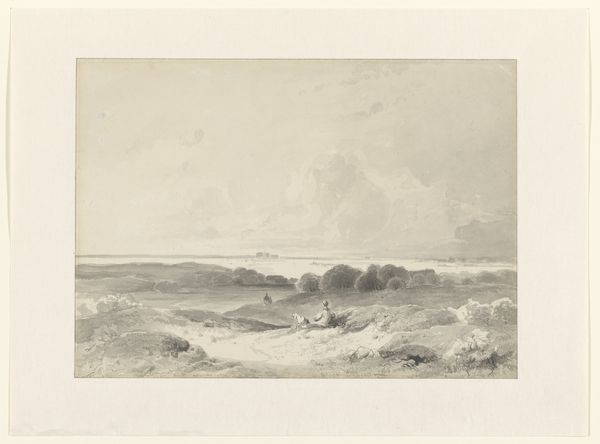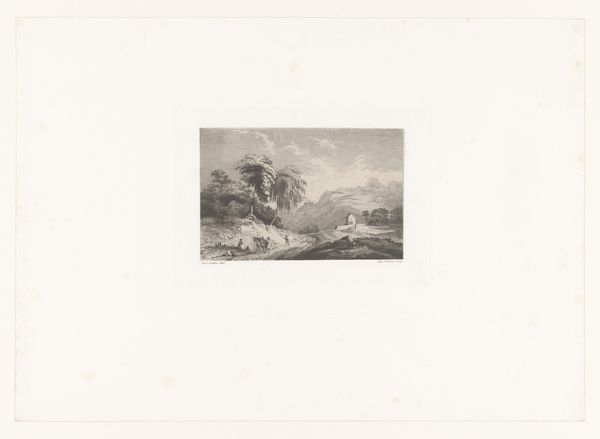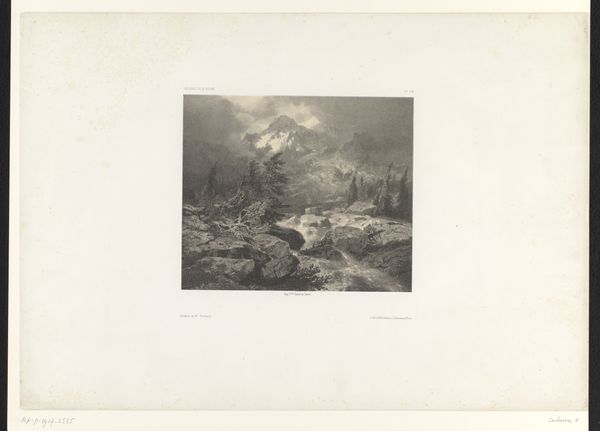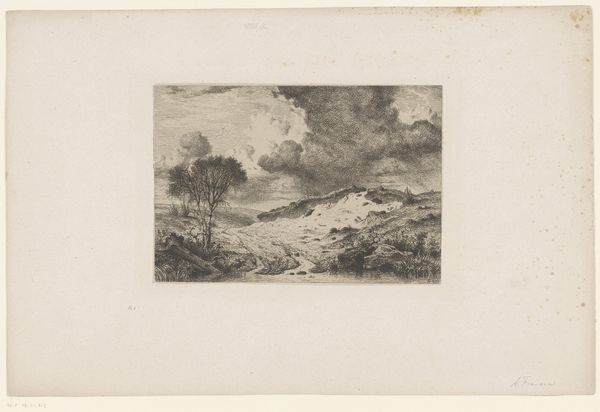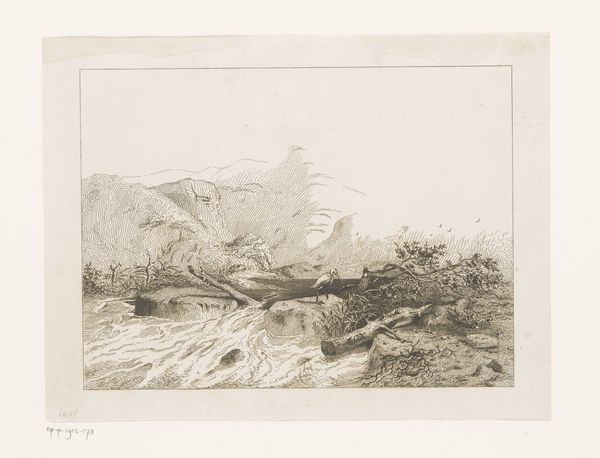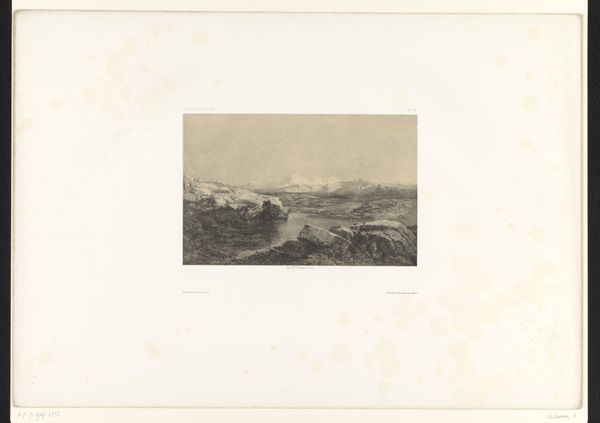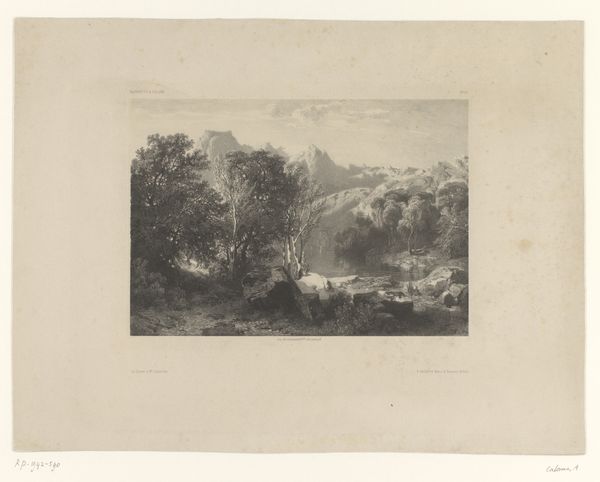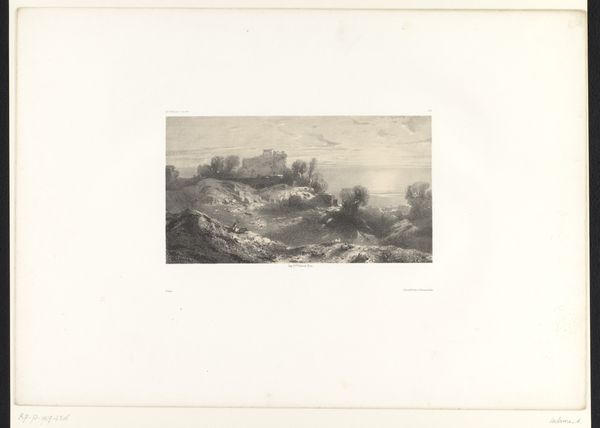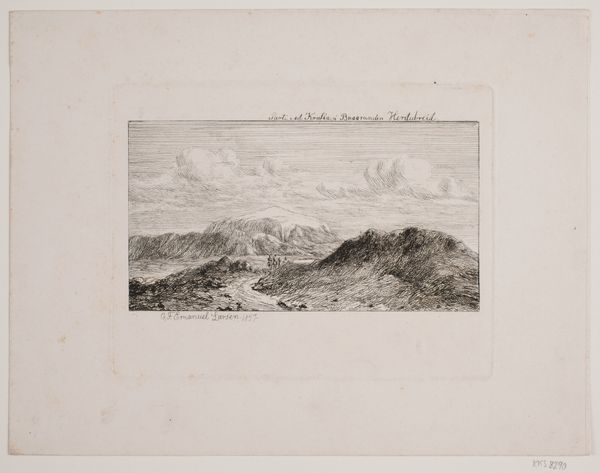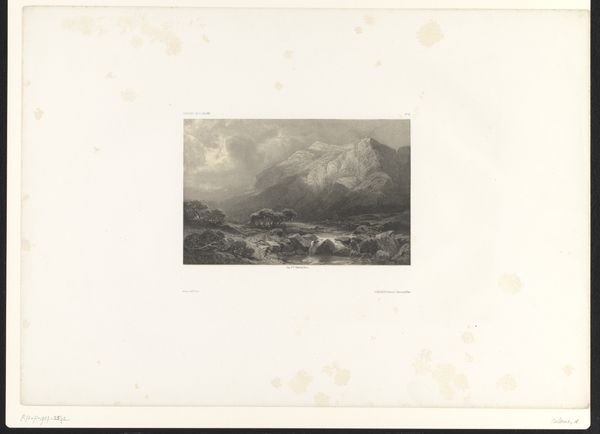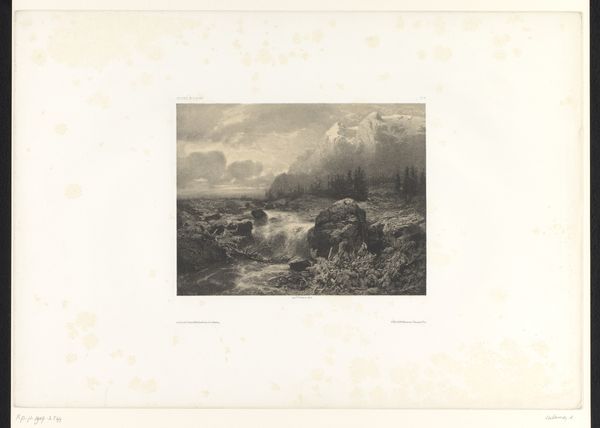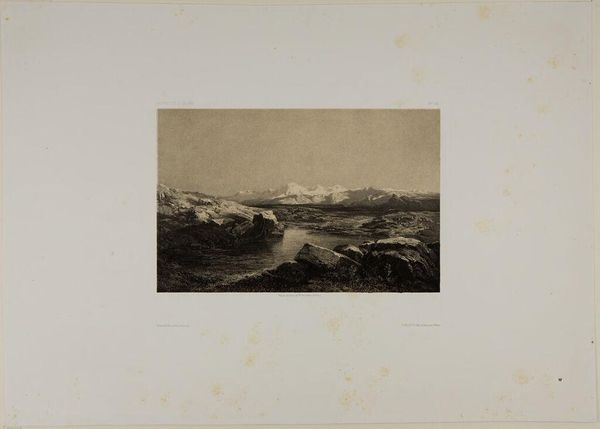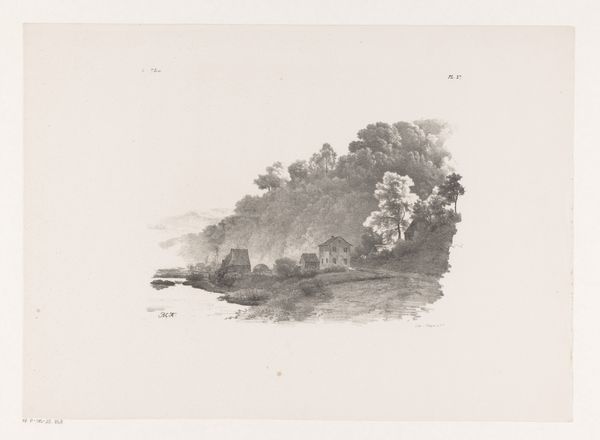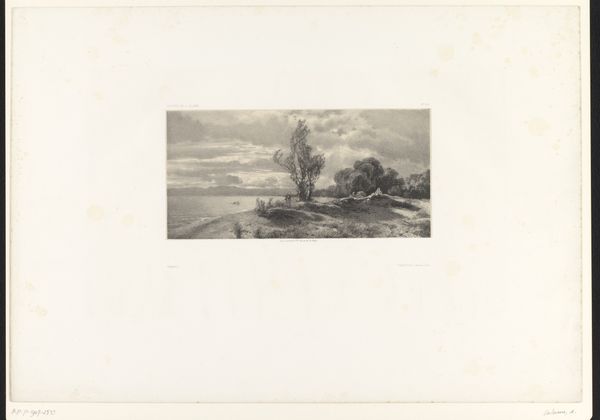
drawing, graphite
#
drawing
#
landscape
#
river
#
romanticism
#
graphite
Dimensions: height 340 mm, width 470 mm
Copyright: Rijks Museum: Open Domain
Editor: Here we have Barend Cornelis Koekkoek's "Stenen in een rivier," created around 1844-1845. It's a graphite drawing of a rocky river. I’m immediately drawn to the texture he creates with just graphite – it almost feels photographic. What aspects of this piece particularly resonate with you? Curator: The piece speaks volumes about the material conditions and labor of artistic production in the Romantic era. Consider the ready availability of graphite and paper facilitating mass production and distribution of landscape imagery to expanding urban audiences. These landscapes weren't just pictures, but commodities produced and consumed within specific social and economic contexts. Editor: So you're saying the drawing’s impact goes beyond just being aesthetically pleasing? Curator: Absolutely. The 'Stenen in een rivier’ isn’t simply a depiction of nature; it’s an engagement with the era's commodification of the natural world and of art itself. Look at the scale - mass-produced drawings meant wider circulation than painted landscapes only afforded by the elite, it brings Romantic ideals of nature to a new class of consumers. It’s crucial to understand the economics that allowed this drawing to exist. What does that suggest to you? Editor: It changes how I view the "Romance" in Romanticism, moving from the purely emotional to how that emotion was manufactured and sold to a broader public. Curator: Precisely! Examining artistic practices as forms of material production challenges our conventional understandings and offers valuable insight into how art actively shaped the socio-economic realities of its time. Editor: I see the drawing differently now – less as an idealized scene and more as a tangible artifact of a specific production process within a particular social moment. Curator: Indeed. By centering our analysis on materiality and production, we move away from passively appreciating the subject and towards understanding art’s role as an active participant within society.
Comments
No comments
Be the first to comment and join the conversation on the ultimate creative platform.
